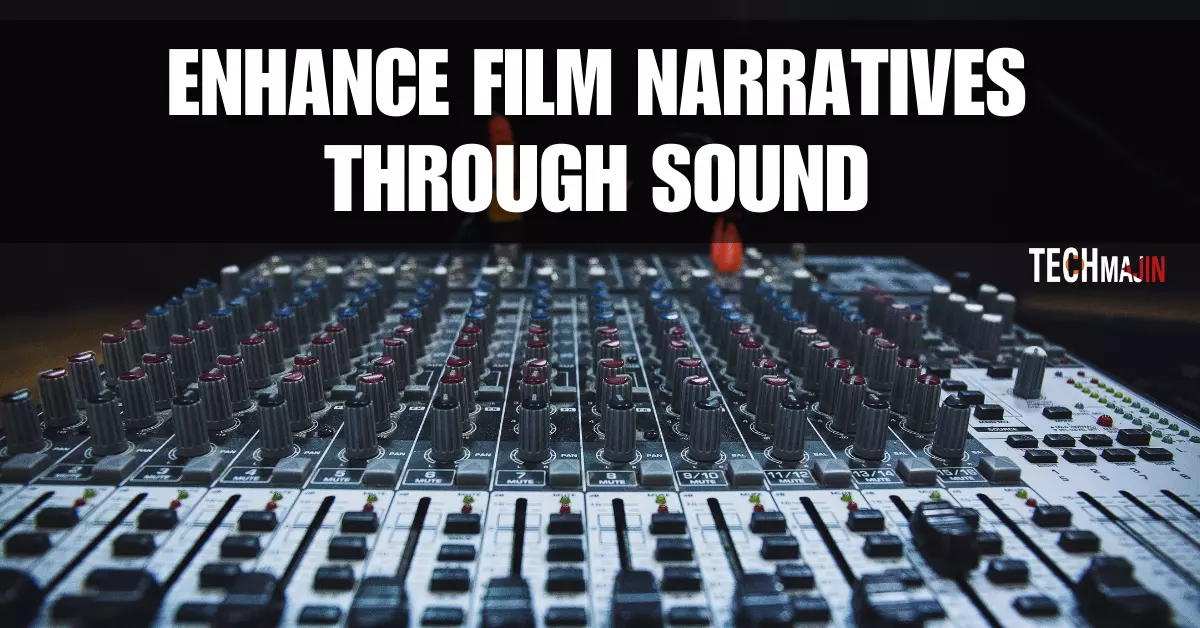In the cinematic world, visuals often take center stage. However, a hidden artist behind the scenes enhances these visuals, turning them into an immersive experience. That artist is the film editor. An essential part of an editor’s job is understanding the power of sound. Just as visuals tell the story, sound amplifies emotions, sets the tone, and crafts a narrative that deeply resonates with audiences.
Background Music: Setting the Mood
Imagine watching a romantic scene without a soft melody in the background or a suspense sequence without those rising tension-filled notes. It just wouldn’t feel the same, would it? Background music is a tool cinema editors use to set the mood and tone of a scene. It can make audiences feel joy, sadness, tension, or excitement, guiding their emotions in tandem with the on-screen events.
Sound Effects: Making It Real
From birds chirping to the loud crash of a breaking vase, sound effects give a sense of realism to films. These everyday sounds, though often unnoticed, are vital. They ground a film in reality and make the world on screen relatable. The Film editor’s job is to carefully weave these sounds at the right moments, ensuring they don’t overpower dialogues but still provide a sense of authenticity.
Dialogue: Ensuring Clarity and Emphasis
Dialogues are the backbone of any narrative. A Film editor ensures that the dialogues are clear, audible, and free from background noises. Sometimes, emphasis is added to specific words or phrases to highlight their importance in the narrative, subtly guiding the audience’s attention to pivotal plot points.
Sound editors work meticulously to ensure that every word spoken by the actors is crisp and comprehensible. This involves noise reduction, equalization, and sometimes even re-recording lines (ADR – Automated Dialogue Replacement) if on-set audio quality is poor.
Ambient Sound: Building the Atmosphere
Have you ever noticed the subtle hum in a busy marketplace scene or the soft rustling of leaves in a forest? That’s ambient sound. It immerses viewers in the setting, making them feel like they’re a part of that world. The inclusion of these sounds requires a discerning ear. A movie editor must ensure that these sounds are not too loud or soft, striking a balance to create a perfect atmosphere.
Ambient sound is essential for creating a believable environment, whether it’s the bustling streets of a city or the tranquility of a countryside retreat. It adds depth and richness to the auditory experience, enhancing the film’s immersion.
Transition Sounds: Bridging Scenes
As scenes change, transition sounds are vital in ensuring the shift feels smooth. These could be musical notes or sound effects that signal the end of one scene and the beginning of another. They help maintain the narrative flow, ensuring the audience is mentally prepared for the next segment of the story.
Transition sounds act as auditory signposts, guiding viewers through the film’s various acts and plot developments. They facilitate seamless storytelling by bridging time, space, or emotion gaps.
Adobe explains, “Edit or sync audio, add sound effects, and automatically duck music or ambiance during dialogue with a single click in the Essential Sound panel.”
Conclusion
Sound is an integral part of filmmaking, often working subtly in the background, enhancing narratives in ways the audience might not consciously notice. The movie editor’s job is to integrate these auditory elements masterfully, weaving them seamlessly with visuals to craft a memorable cinematic experience. As technology and sound design techniques continue to evolve, the role of sound in storytelling will only grow more profound and intricate.
| Also Read: 5 Steps to Build Your Home Theater! |






